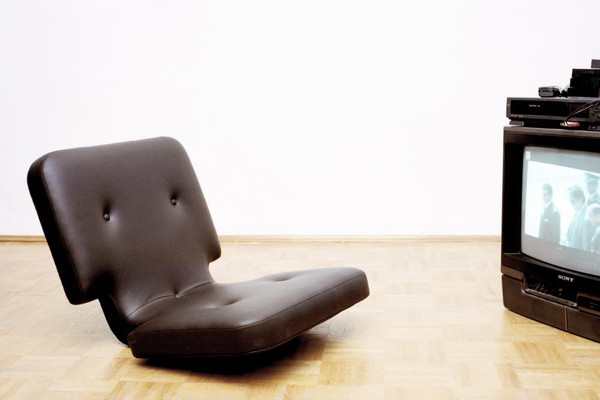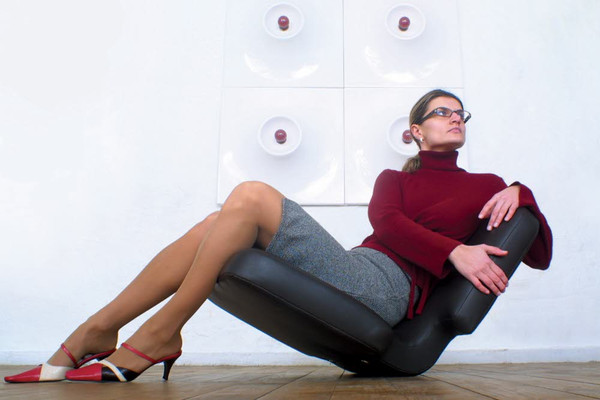Lost Furniture Design Classics: Rocker by Constantin Wortmann & Benjamin Hopf, Büro für Form
One of the biggest disappointments of Milan Furniture Fair 2015 was that all manufacturers, or at least all the ones we visited, seem almost pathologically intent on maintaining the convention of a chair as a legged and/or cantilevered object which supports the human frame in an elevated position circa 40 – 45 cms above the floor and with the lower leg extended away from the body.
Yet changing technology is resulting in a need for new chair typologies, for chairs which offer alternative sitting positions, seating positions far removed from those offered by traditional chair designs and which, for example, allow for seating positions which aid and abet the use of tablet computers and similar mobile devices.
Bum low, knees high or tailor stylee, for example.
The most obvious templates would be the traditional legless Zaisu chairs favoured in countries such as Japan or Korea, something excellently demonstrated by the OMA low seater unveiled by Knoll at Milan 2013. A chair which has, like so much “launched” in Milan, subsequently vanished without trace.
Then there is of course Maarten van Severen’s outstanding aluminium LC95A low lounger from 1993, a work perhaps more popularly known in the plastic version marketed by Kartell as the LCP.
The problem with such chairs however is that they are static and so, by definition, is the sitter: not so with Rocker by Constantin Wortmann & Benjamin Hopf a.k.a. Büro für Form
Designed in 2004, so some six years before the launch of the iPad and as such some six years before the need for such an object was understood, Rocker not only cuts a delightful, classic, figure, including adhering to the essentially cubic form Heinz Rasch understood as being central for popular acceptance of a chair, nor is Rocker only a neatly executed and well proportioned object, but, and as the name implies, it rocks – thus allowing you to adjust your position as required between leg-crossed, leg-extended, leg-bent with knees high, and any position inbetween and so, in theory, allow for longer, more productive, more satisfying sitting. Be that professional, personal or social.
According to Constantin Wortmann Rocker did enter production with a small German manufacturer, a small German manufacturer who sadly went bust shortly after the product launch. Büro für Form subsequently marketed the remaining stock under their own ITEMS brand.
And so while Rocker may not be as lost as many of the objects we have featured and will continue to feature in these pages, it is unquestionably lost in the sense that the underlying concept so enticingly developed in the project, and the new sitting positions thus offered, are not to be found in either the contemporary seating market nor the thinking of contemporary furniture designers and manufacturers.
We’ve never tried Rocker, we don’t know how well it achieves what it promises, how much comfort it offers, how durable it is or what it might potentially cost in series production; however, as a move in the right direction it was certainly ahead of its time and is for us a lost furniture design classic that deserves a second chance…….
Tagged with: Benjamin Hopf, Büro für Form, Constantin Wortmann, Lost Furniture Design Classics, Rocker

